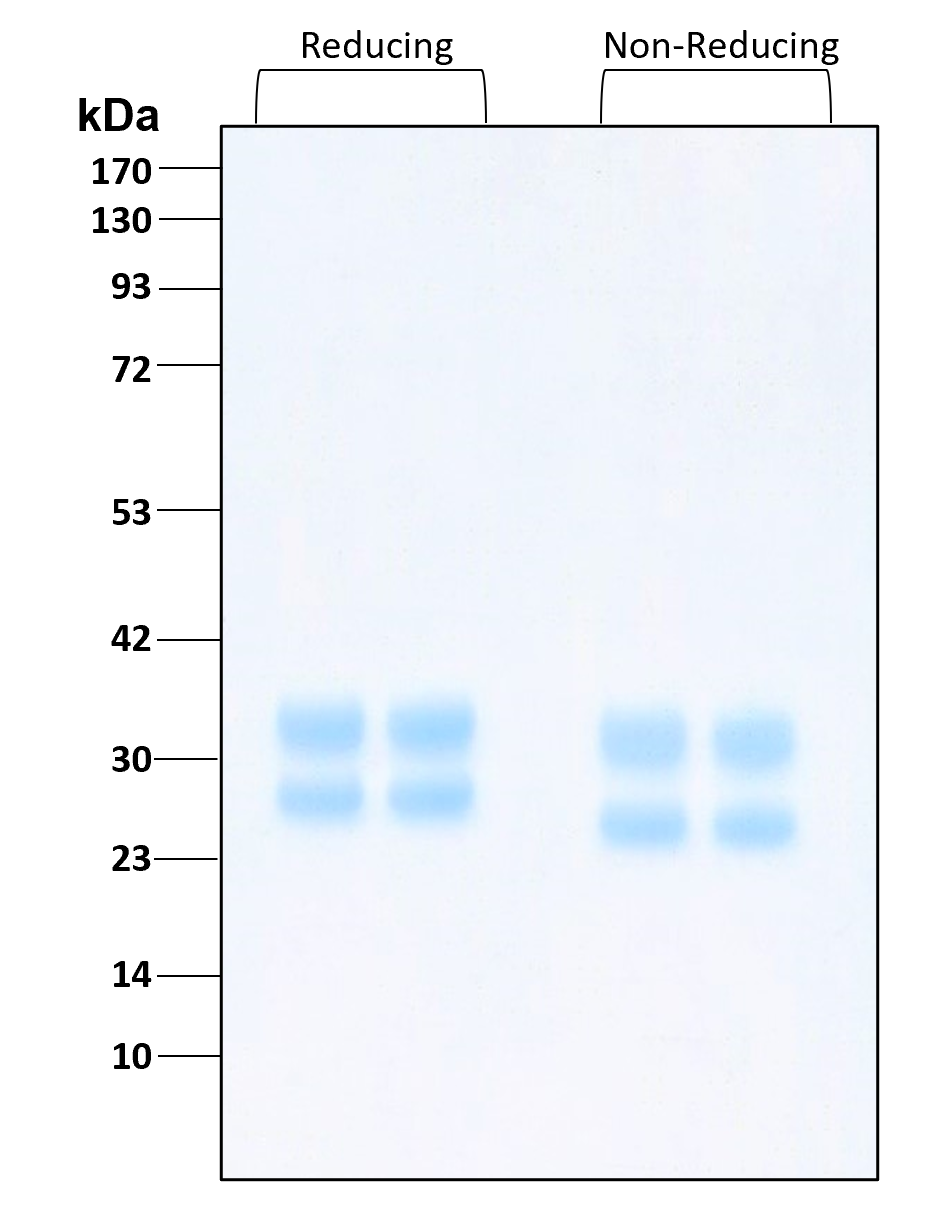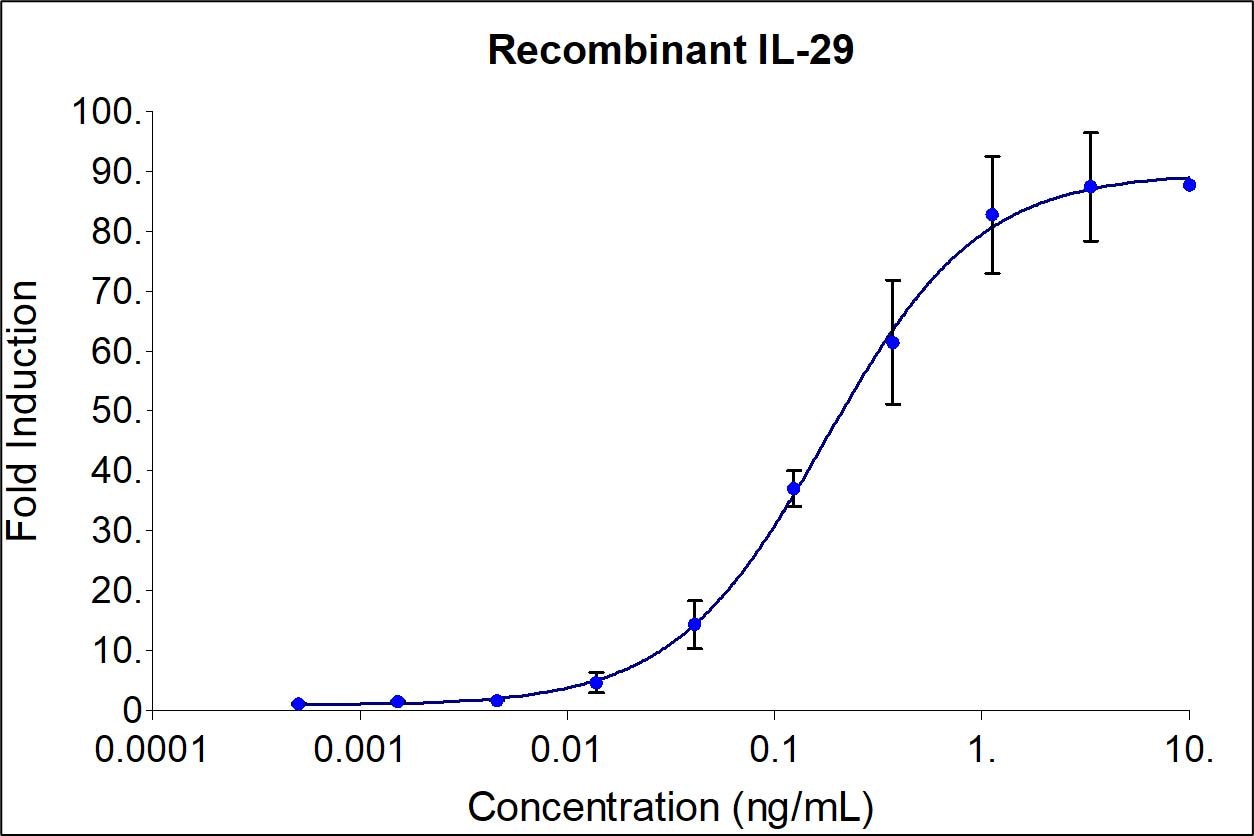Validation Data Gallery
Technical Specifications
| GeneID | 282618 |
| Species | Human |
| Expression | HEK293 |
| Activity(Primary) | 0.12-0.6 ng/mL |
| Specific Activity | minimally 8.00 x 105 IU/mg |
| Purity | >95% |
| Endotoxin | <1 EU/μg |
| Accession Number | Q8IU54 |
| Molecular Mass | 27 and 31 kDa reduced, 25 and 30 kDa non-reduced, monomer, glycosylated |
| Formulation | 1x PBS, See Certificate of Analysis for details |
| Species Reactivity | human |
Stability and Reconstitution
| Stability and Storage | Product Form | Temperature Conditions | Storage Time (From Date of Receipt) |
|---|---|---|---|
| Lyophilized | -20°C to -80°C | Until Expiry Date | |
| Lyophilized | Room Temperature | 2 weeks | |
| Reconstituted as per CofA | -20°C to -80°C | 6 months | |
| Reconstituted as per CofA | 4°C | 1 week | |
| Avoid repeated freeze-thaw cycles. | |||
| Reconstitution | Briefly centrifuge the vial before opening. It is recommended to reconstitute the protein to 0.2 mg/mL in sterile 1x PBS pH 7.4 containing 0.1% endotoxin-free recombinant human serum albumin (HSA). Gently swirl or tap vial to mix. |
Background
Interleukin-29(IL-29, also known as IFN gamma1)is a member of the helical cytokine family and is a type III interferon. IL-29 plays an important role in host defenses against microbes and its gene is highly upregulated in cells infected with viruses (PMID: 18547367;12469119;27637354)
Synonyms
Cytokine Zcyto21, IFN lambda 1, IFNL1, IFN-lambda 1, IL 29, IL29, IL-29, Interferon lambda 1, Interleukin 29, ZCYTO21
Publications
| Species | Title |
|---|---|
Int J Mol Sci Multifaceted Analysis of IL-23A- and/or EBI3-Including Cytokines Produced by Psoriatic Keratinocytes. | |
Antiviral Res Antiviral candidates against the hepatitis E virus (HEV) and their combinations inhibit HEV growth in in vitro. | |


